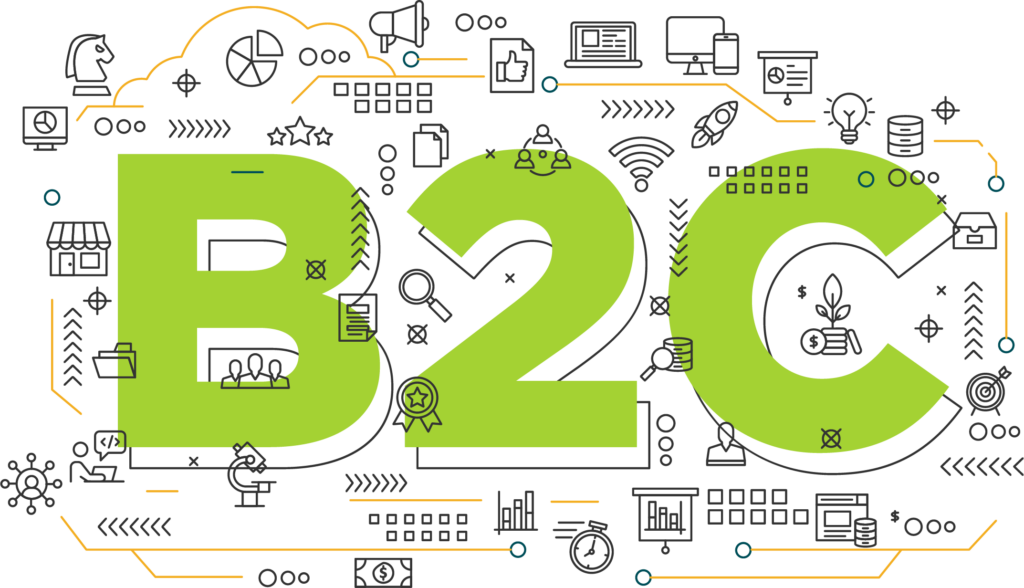SEM for B2C

SEM for B2C. CPM, CPC, CTR, ROAS. Chat GTP. ABC easy as 123.
Uh, whut?
We know. There are sooo many acronyms, numbers, and letters in digital that they can come across as seemingly incomprehensible at times. However, today’s topic is anything but that. We’re talking about Search Engine Marketing for Business to Consumer campaigns. This is quite possibly the most frequently requested type of campaign our clients ask about, and a strategy we often recommend. A while back we spoke to a more niche and lesser utilized type of SEM campaign, Google Ads for B2B. To learn about a more common use for SEM, read on.
what is it?
SEM or Search Engine Marketing (not to be confused with SEO or Search Engine Optimization. More on that later.) is a paid form of digital advertising used to ensure your company’s product or service shows up on search engine results pages. It is established by creating a keyword plan that includes the types of search terms your prospective customers are likely to use when seeking out your widgets. For example, let’s say you sell custom countertops in a specific metro area. Your keyword plan will likely have some more specific terms to differentiate your product from big box stores that sell similar things, like custom counters, hand made countertops, countertops Springfield, etc.
When a search is keyed in, the listings shown are typically paid ads first followed by organic listings. The platform being used determines the ranking of these listings using a number of factors, like the relevance, the amount you bid, and how much competition is out there for that particular product, service, or industry. By far the most used and popular search engine today is Google. This is followed by others such as Bing, Yahoo, duckduckgo.com, and many more.
A note about SEO or Search Engine Optimization. We often hear folks use SEM and SEO interchangeably, when in reality they’re fairly different. In short, SEM is paid digital advertising used to show your listing at or near the top of a page, while SEO is the long term work done on your web presence so that people find you in non-paid, organic listings. To learn more, we talk about how to improve your SEO long game in our post Foundational SEO Best Practices.
why does it work?
SEM can be a successful tool for many types of B2C industries. Does your business have a relatively short purchase cycle, like that of say, a restaurant? Someone’s hungry and in the market for a lunch out with friends. They might search for lunch in [city], or restaurants near me, find your listing – and voila! Paid search garnered you some lunch sales.
But search is beneficial beyond just the short term, it’s also very savvy for businesses with longer sales cycles. Let’s return to the countertop example. For many individuals, the decision to install a custom countertop requires some thought, research, and time to determine the right product for them. Investing in an ongoing search campaign keeps your business in front of prospective customers as they’re going through this process, and makes it more likely they’ll return to you when they’re ready to commit.
what’s next in the world of SEM?
We only touched on about four commonly used search engines today. In truth, there are dozens out there, though many of them are lesser known than the big names we mentioned. These search engines operate by users keying in written terms on desktops or mobile devices and looking for websites, articles, or sales listings. This method of searching for information, products, and services is most common among older demographic groups.
In younger users, those 13-17 and 18-25, we’re beginning to see a trend toward utilizing social media as their primary search engine and source of information. This is skewing toward video based search results rather than articles or websites, and we’re seeing this really evolve particularly on YouTube and TikTok. This has some potentially scary ramifications when we consider the potential for spreading misinformation through user generated content. However, it also has the potential to lead toward some exciting possibilities when we think about the power of visual ads where you can better demonstrate all a product as to offer in a video.
The long and the short of it is, SEM is perhaps the digital touchstone to have as a part of your overall marketing efforts. If you’ve wondered about establishing an ongoing SEM campaign, we hope these thoughts helped you determine if it can make sense for your business. If you have more questions or want to start a conversation about what could work for you and your particular situation, we’re happy to help point you in the right direction.
Go Forth. Go Digital.
-cohort.crew



